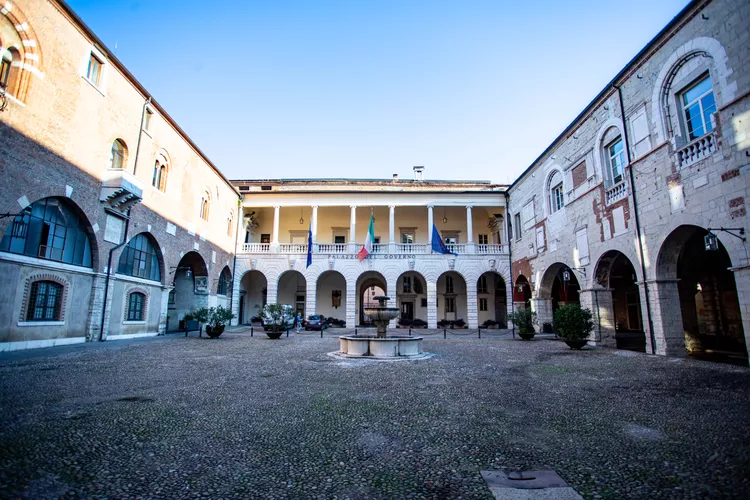Summary of Brescia, Italy
Though often overlooked by tourists, Brescia, Italy is an interesting city with a castle, Roman ruins, Renaissance squares, and a medieval city center.
Brescia Location
Brescia is located east of Milan in the Lombardy region of northern Italy. It sits between Lakes Garda and Iseo and serves as a gateway to the Valcamonica, a UNESCO site renowned for having the largest collection of prehistoric rock art in Europe, situated to the north.
Getting to Brescia
Brescia is accessible via several train lines, making it easy to reach from Milan, Desenzano del Garda (situated on Lake Garda), Cremona (to the south), and areas like Lake Iseo and Val Camonica (to the north). The city features in our suggested Milan to Venice train itinerary. Moreover, a local bus service connects the train station to the city center, and additional buses operate to other nearby cities and towns.
Brescia also has a small airport catering to flights within Italy and Europe. However, the closest large airport that offers flights from the US is located in Milan. Additionally, the small airports of Verona and Bergamo are nearby. (Refer to Italy airports map for more information).
For tourist information, visitors can head to Piazza Loggia, 6.
Where to Stay
- Best Western Hotel Master, located in the historic center near the castle.
- Hotel NH Brescia, situated by the train station just outside the city center.
What to See in Brescia
- Piazza della Loggia – This picturesque square was built in the 15th century. The Torre dell’Orologio, or clock tower, was modeled after the campanile in Venice’s Piazza San Marco. Porta Bruciata, located in one corner, stands as a medieval tower and gate.
- Cathedrals – The two cathedrals are located on Piazza Paolo VI. The Rotondo serves as the old 12th-century cathedral, showcasing Roman remains and the apse of an 8th-century basilica. The new cathedral, designed in the late Baroque style, took over 200 years to complete.
- Via dei Musei – This ancient Roman road is lined with Roman ruins, including the Roman forum, a theater, and a temple erected in 73AD.
- Monasteries – The Monastery of Santa Julia, founded in 753, includes three churches and now houses the city museum, which exhibits artifacts from prehistory to the 20th century. The San Pietro in Lamosa monastery, established in the 11th century, is Romanesque in style and forms part of a UNESCO World Heritage Site: Longobards in Italy, Places of the Power.
- Piazza della Vittoria – Constructed in 1932, this expansive square once comprised a medieval center. It features a 60-meter tall tower. The iconic Mille Miglia race commences from Piazza della Vittoria and an antiques market is held on the third Sunday of each month.
- Castle – The medieval castle complex, perched on a hill, includes towers, ramparts, gardens, courtyards, drawbridges, and numerous underground tunnels. Within its walls lie the Ancient Arms Museum, the Risorgimento Museum, and a model railway exhibit. Visitors can enjoy panoramic views of the city from the highest point.
Festivals and Events
Brescia is renowned for the Mille Miglia historic car race held each spring, which starts and finishes in the city. Additionally, the Fair of San Faustino and Giovita in February ranks among the largest festivals. The Franciacorta festival celebrates the sparkling wine produced in the nearby hills. Furthermore, music performances are frequently hosted at the Teatro Grande, a theater dating back to the 1700s.





